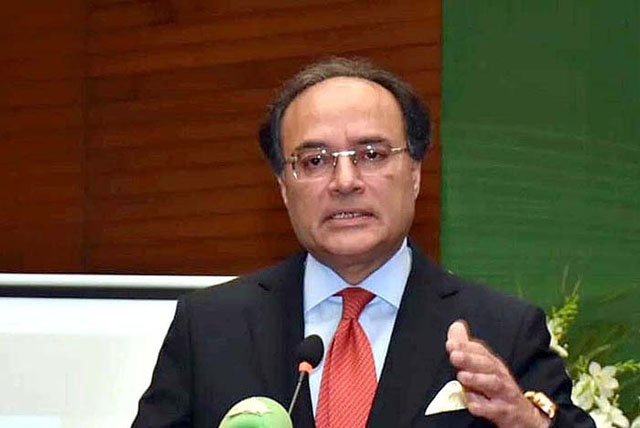In a detailed report spawning 28 pages released by Department of Financial Services, Ms. Maria T. Vullo, Superintendent of the New York State Department of Financial Services, has accused Habib Bank Ltd. of more than 53 counts of grave misconducts.
The detailed report investigated serious deficiencies identified in the New York branch ranging from Anti Money Laundering (AML) compliance, including the Bank Secrecy Act (BSA) to terrorist financing.
The report on the first page states that “The evidence presently before the Department demonstrates that compliance failures found at the New York Branch are serious, persistent and apparently affect the entire Habib banking enterprise.”
“They indicate a fundamental lack of understanding of the need for a vigorous compliance infrastructure, and the dangerous absence of attention by Habib Bank's senior management for the state of compliance at the New York Branch.”
Highlighting the Bank’s utter disregard for risk management, the report highlighted that, “Head Office screening, which the Branch has repeatedly relied on as an excuse for its own lax attitude regarding BSA/ AML safeguards, appears to be as weak as that of the Branch itself — if not even more inadequate. For these reasons, the Department's most recent examination determined that the Branch should receive the lowest possible rating, a score of “5.””
As a consequence of the above mentioned lapses, “The Bank has committed violations of New York laws and regulations; has conducted its business in an unauthorized or unsafe manner; and has operated in an unsound or unsafe condition to transact its business, and the Department has determined that it should impose a penalty upon the Bank for these violations.”
Given the authority granted to Ms. Vullo by the New York by Banking Section Law Section 44, she seeks to impose a civil monetary penalty upon HBL of Six Hundred Twenty-Nine Million Six Hundred Twenty-Five Thousand Dollars ($629,625,000). In addition to the penalty, the Bank has been commanded to appear before the New York State Department of Financial Services, One State Street, New York, NY 10004, at a Hearing Room to be designated, for a hearing on September 27th, 2017, at 10 a.m.
After a reportedly repeated breakdowns in the Bank’s BSA/AML and OFAC compliance programs, the State Department conducted multiple investigations which revealed violations of the Written Agreement and/or New York Banking law have occurred every year since 2006 (with the exception of 2009).
The report highlighting one of the investigations conducted in 20016 states that, “The Department and the Board jointly conducted another examination in 2016, reviewing information and financial data as of March 31, 2016 (the “2016 Exam”). The Department determined that the New York Branch continued to suffer from severe weaknesses in its risk management and compliance with BSA/AML and OFAC laws. The 2016 Exam noted that Habib Bank had been under either joint or separate enforcement actions by the Department and Board for 10 consecutive examination cycles.”
The 2016 report further highlighted “The 2016 Exam identified significant weaknesses in the Branch's risk management capabilities. It also found that, despite the Department's repeated criticism of the Branch's performance, management had yet to implement effective controls to mitigate and manage 4 BSA/ AML and OF AC risks at the Branch. Overall, serious deficiencies identified by the Department in the 2016 Exam include (without limitation):
- Insufficient BSA/ AML compliance;
- Insufficient training;
- Insufficient customer risk ratings, including insufficient risk-based foreign correspondent due diligence;
- Insufficient documentation for enhanced due diligence customers;
- Insufficient senior management and head office governance, oversight, and documentation;
- Lack of evidence for adequate OF AC and sanctions screening;
- Weaknesses in BSA/AML independent testing and the Branch's audit program, including weaknesses in the internal audit program's rating methodology; and
- Weaknesses in data mapping and integrity.”
The Risky Al-Rajhi Bank Relationship
The report also highlights HBL’s relationship with the largest Saudi Arabian bank Al Rajhi Bank (Al Rajhi). The Saudi Arabian bank has been linked with various counts of terror financing. The report highlights that, Al Rajhi “For many years, has been linked through negative media to Al Qaeda and terrorism financing. …. After the 9/11 terrorist attack, evidence began to emerge that Al Rajhi Bank and some of its owners had links to organizations associated with financing terrorism, including that one of the bank's founders was an early financial benefactor of al Qaeda. (Senate Report at 189)”
Habib Bank’s transactional relationship with aforementioned bank with ties to Al Qaeda exposed it to a range of litanies from terror financing to money laundering. The report highlighted the relationship between the two banks stating, “Since [2014], Al Rajhi transactions represent approximately 24 percent of the total number of transactions conducted through the New York Branch.”
Furthermore, the 2016 Exam concluded that, “overall, Habib Bank and the Branch's management failed to establish an appropriate BSA/AML control environment to manage its high-risk client base, and that the Bank's management's risk appetite substantially exceeds the control measures in place at the Bank”
Additional findings of the 2016 Exam
- More than 13,000 transactions with SWIFT payment messages that omitted essential information, such as the identities of the ultimate originator and beneficiary of each transaction; and
- Multiple instances where multiple SWIFT payment messages were improperly aggregated into a single message for processing through the Branch, thereby preventing the Branch from effectively screening these messages for suspicious or prohibited activity.
- The Department's investigation determined that a 7 substantial number ofparties were improperly included on the Habib Bank “good-guy” list, or that the transactions had other indicia that should have required them to be screened by the Bank.
- The Department's investigation determined that transactions went un-reviewed because of inclusion of transacting parties on the good-guy list, but where:
- 154 terms included in Habib Bank's “good guy” list corresponded to identical entries that were included on the Specially Designated Nationals and Blocked Persons List (the “SDN List”), which is a list of parties prohibited from transactions by the U.S. Treasury Department; and
- terms on the “good-guy” list include prohibited persons and entities identified on the SDN List corresponding to:
- a transaction that involved the leader of a Pakistani terrorist group; o a transaction that involved a known international arms dealer;
- an individual on the Specially Designated Global Terrorist list;
- The former Deputy Prime Minister of Iraq under Saddam Hussein; and o an Iranian oil tanker involved in a transaction.
- Department's investigation has also identified breakdowns in the Branch's transaction monitoring processes, including instances where the Branch's screening terms are wholly insufficient to identify all of the activity the term is intended to identify. One example of this deficiency is the keyword “Embassy of Pakistan,” which failed to identify the payment messages containing the phrase “Pakistan Embassy.”
- The Department's investigation further uncovered several payments totaling more than $27,000 that were sent to an account at the Bank's Head Office associated with an alleged cybercriminal wanted by the Federal Bureau of Investigations (“FBI”). The account holder was charged with wire fraud; identify theft and theft of $50 million on June 29, 2012 in a warrant issued by the U.S. District Court for the District of New Jersey. The account holder was added to the FBI's Cyber Crimes Most Wanted List in 2012, and was arrested in Pakistan in February 2015. Nevertheless, these payments to the alleged cybercriminal were all cleared through the New York Branch between October 6 and November 28, 2014, despite the widespread availability of this negative information on the account holder.
- Department's investigation has identified nearly 200 additional instances of suspicious activity that were never identified by the Branch. These transactions include a variety of suspicious characteristics, such as
(i) Payments lacking economic purpose (e.g., a payment to a technology company for leather goods);
(ii) Instances of structuring;
(iii) Shell company activity; and
(iv) Politically exposed person activity.
Habib Bank Ltd. has been charged with a total of 53 instances of violations of law, regulations, orders







